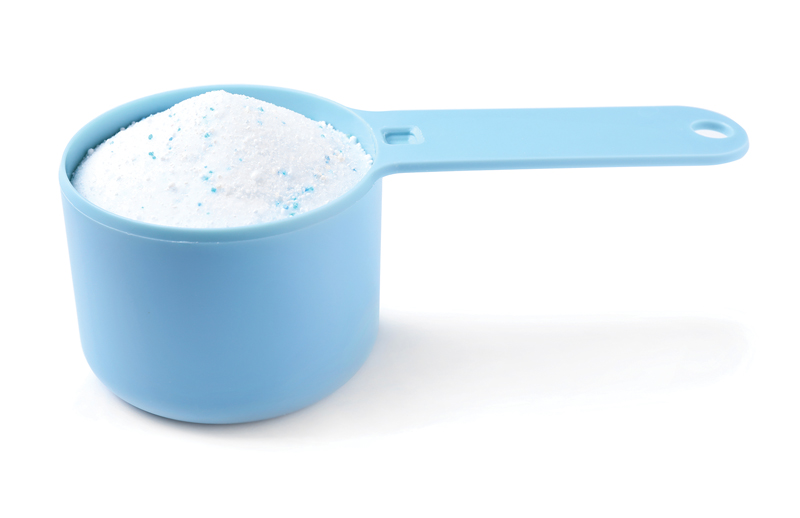I offer a wash-dry-fold service at my laundromat, and I was wondering if there is any product we could use in place of chlorine bleach. The problem we occasionally run into is that my attendants will mistakenly use the chlorine bleach on colored garments, which will spot or strip the colors on those items. Of course, we also carry color-safe bleach, but that’s not as effective on whites as chlorine bleach. Is there another option?
One option would be to try using ammonia, rather than chlorine bleach. It has stronger cleaning properties than color-safe bleach. However, there are a couple of drawbacks – (1) ammonia has a strong odor, and (2) if it accidentally mixes with chlorine bleach, the results could be quite harmful.
Another simpler option is to carry chlorine bleach in liquid form, and have color-safe bleach in powder form. This will help to keep your employees from accidentally ruining colored garments with chlorine bleach – because each type of bleach will require a different laundering process, and it will be much easier to distinguish between the two separate types of bleach.
One of my customers recently brought in with a shirt and a pair of pants that had a number of small holes in them. These holes were about the size of a bean, and he claimed that one of my 30-pound washers was responsible for ruining his garments and wanted reparations for the damage. I have never had a claim like this before or seen that type of damage to a laundered item. What do you think happened, and what should I do?
First of all, you need to understand that there is no way your washing machine could possibly do that type of damage to clothing. I’ve seen washers rip garments, but only when a customer accidentally closed the door on a garment and the washer drum began to turn – which definitely could rip a more fragile clothing item. However, a washer will not create a number of small holes like those that you’ve described.
I’ve seen strong chlorine bleach damage garments like that – but when bleach damages clothing fibers, it typically leaves a yellow or white ring around the holes it creates. I’ve also witnessed that type of damage when battery acid on clothing comes in contact with water; the acid will dissolve the garments’ fibers and can create holes like the ones your customer showed you.
My suggestion is that, if this person is a steady, long-time customer, do whatever you can to settle this dispute with him, even if you know that you and your store’s equipment are not at fault.
My husband and I own a laundromat, and the lint screens on some of our stack dryers have developed a residue that we can’t seem to remove. It’s almost like drops of glue on the lint screens. Do you have any suggestions for us?
I would check the heat level on your dryers. Some garments, especially slacks and dresses, have their fabrics glues together in certain areas. And, if you are overheating your dryers, that glue or adhesive can come loose in the dryer and eventually wind up on your lint screens.
Therefore, your dryers should not be set above 180 to 185 degrees.
As far as removing the glue from your lint screens, often naphtha or certain paint removers can be effective at dislodging these adhesives. Of course, glue has many different forms and formulations. Some glue is plastic-based, some is metal-based, and some feature a combination of acrylics. Therefore, it likely will be a process of trial and error to see what may work best to clean off those lint screens.







